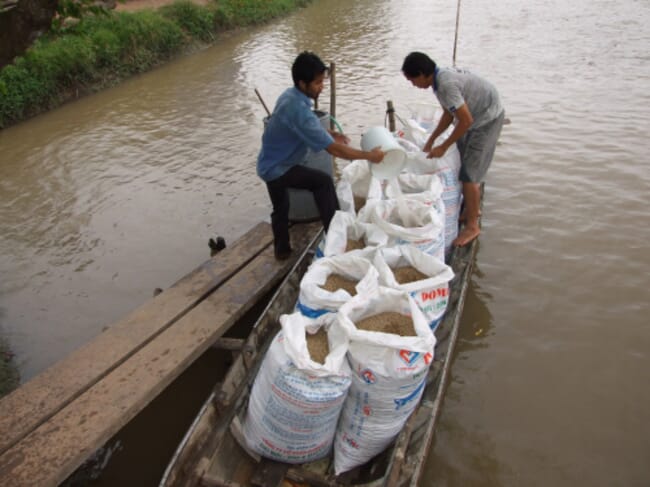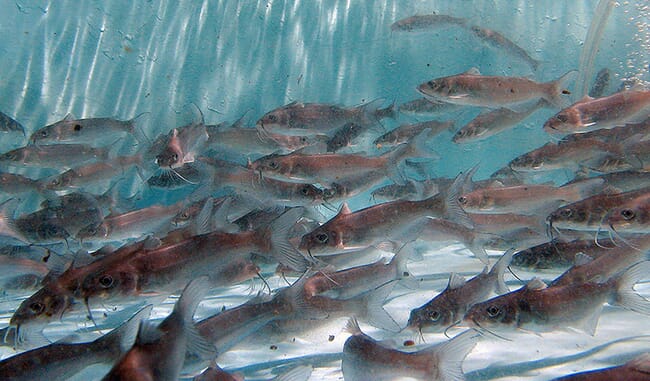A recent study in Aquaculture Reports suggests that baker’s yeast (Saccharomyces cerevisiae) can be used as a probiotic to promote growth performance and immune responses in freshwater catfish (Mystus cavasius). The study also explored whether yeast supplementation enhances the fishes’ ability to survive Pseudomonas challenges.
According to results from the study, feeding M. cavasius fry a diet containing 1.0g yeast/kg feed significantly improves growth rates and immune responses. This dose was also key in improving overall survivability rates one week after fry were exposed to the pathogen Pseudomonas fluorescens. Based on these observations, the researchers concluded that baker’s yeast boosts growth in M. cavasius and could be an alternative to antibiotic treatment for disease.
Background
Mystus cavasius, or gulsa tengra, is a species of freshwater catfish native to Bangladesh and other regions of Southeast Asia. There is high market demand for the species in West Africa and South Asia, and commercial production has increased to meet it.

© Tom Thompson
Disease is the key setback for gulsa tengra aquaculture. Producers tend to rely on antibiotics to address disease challenges, but this has well-documented drawbacks. Many antibiotics leave environmental residues and over-reliance on the drugs contributes to disease resistance. In light of these concerns, researchers are exploring alternatives to antibiotic therapy.
Probiotics have emerged as a potential replacement for antibiotics in aquaculture. In other freshwater species, supplementing diets with yeast probiotics has improved growth rates and immune responses, making the fish less susceptible to disease. However, researchers have not explored the impact of yeast probiotics on gulsa tengra.
The experiment
The researchers wanted to explore if a diet supplemented with baker’s yeast would impact growth performance, body composition, feed utilisation and disease resistance in gulsa tengra.
In order to do this, the researchers put gulsa tengra fry into 12 different glass aquaria, with 15 fry per aquarium. The fish were fed four experimental diets containing different concentrations of baker’s yeast (Saccharomyces cerevisiae) over 75 days:
- T1 – diet containing 30 percent crude protein and no probiotic yeast
- T2 – diet containing 30 percent crude protein and 0.5g probiotic yeast/kg feed
- T3 – diet containing 30 percent crude protein and 1.0g probiotic yeast/kg feed
- T4 – diet containing 30 percent crude protein and 1.5g probiotic yeast/kg feed
After 75 days, the fish were exposed to Pseudomonas fluorescens, a common fish pathogen. The researchers tracked the fish for an additional week and measured the path of infection and mortality rates in the different aquaria.
Results
Yeast supplementation significantly improved final weight gain, percentage weight gain and immune function in gulsa tengra fed diets T2, T3 and T4. The fry fed the control diet (T1) didn’t perform as well. Fry in the T3 group had the highest final weight and showed the greatest percentage weight gain of all the groups. The percentage weight gain in T3 was more than double than T1 – indicating a major performance boost. Feed conversion rates and protein efficiency ratio (PER) were highest in T3 as well.

© Tom Thompson
When measuring immune function and overall survivability, researchers observed similar trends. T3 exhibited the lowest mortality rate and had a 90 percent survival rate one week after exposure to P. fluorescens. T1 had the highest mortality rate, at 70 percent, and the lowest survivability rate (30 percent).
These results indicate that baker’s yeast can act as a probiotic supplement for M. cavasius fry. They also demonstrate that formulating a diet with 1.0g yeast/kg aquafeed will improve growth, immune performance and survival rates.
Key take-aways
The researchers couldn’t definitively say why probiotic supplementation improved these performance measures. This point is important because there could be an underlying mechanism that influences gulsa tengra growth and immunity that researchers are unaware of.
In this case, the researchers suggested that the yeast increased the appetite of the fry, leading to boosted growth. They also proposed that the yeast improved enzyme digestibility which in turn improved growth rates.
Though the study could not state why performance improved in the experimental diets, the researchers recommended including probiotic yeast as a sustainable way of improving performance without relying on antibiotics.



